Abstract
1. Isolated Lymnaea stagnalis heart ventricle cells contain cation-conducting channels with properties characteristic of Ca2+ channels. These channels, which carry inward Na+ currents in the absence of Ca2+, are activated by the molluscan cardioactive peptides FMRFamide and FLRFamide, and are blocked by Co2+ ions. 2. FMRFamide also activated inward Ba2+ currents at the cell's resting potential. These currents, which were also blocked by Co2+ ions, reversed at a membrane potential of +70 mV. 3. Both sodium and barium currents were initiated when the peptides were applied to the cell outside of the patch pipette indicating that a secondary messenger is likely to be involved in the FMRFamide response.
Full text
PDF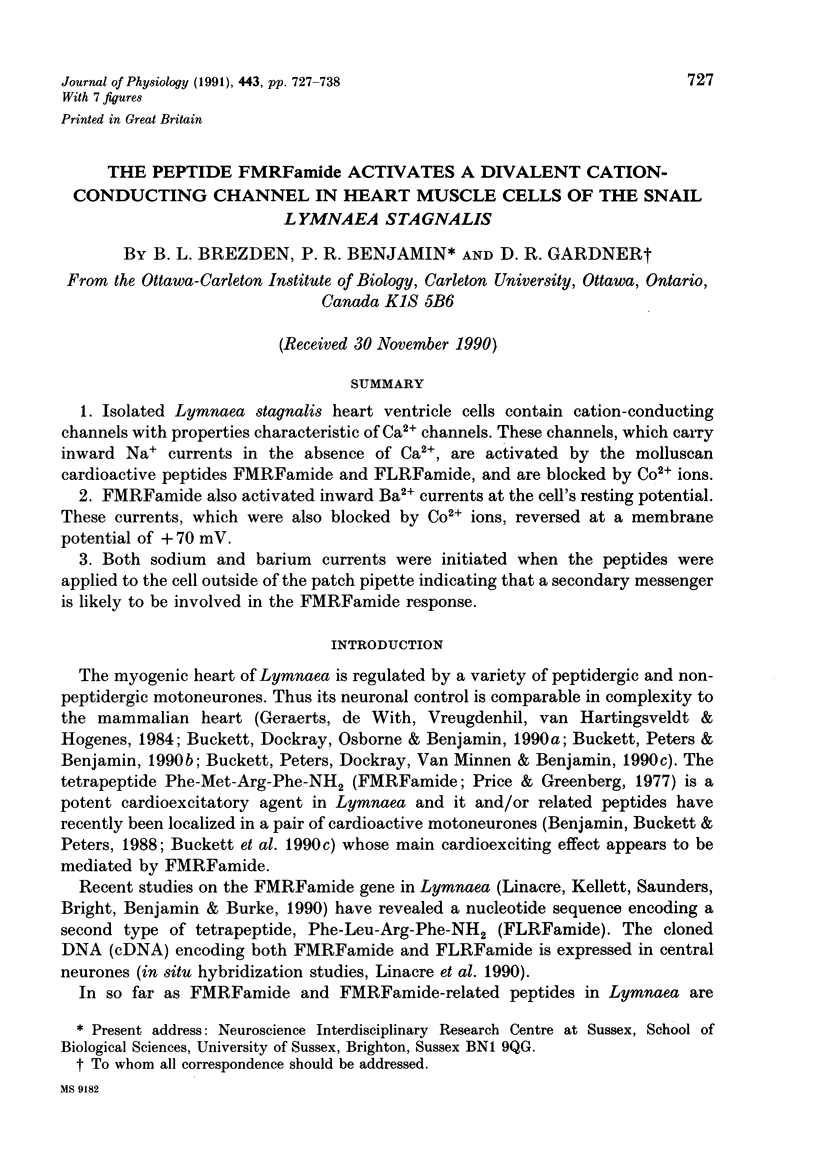
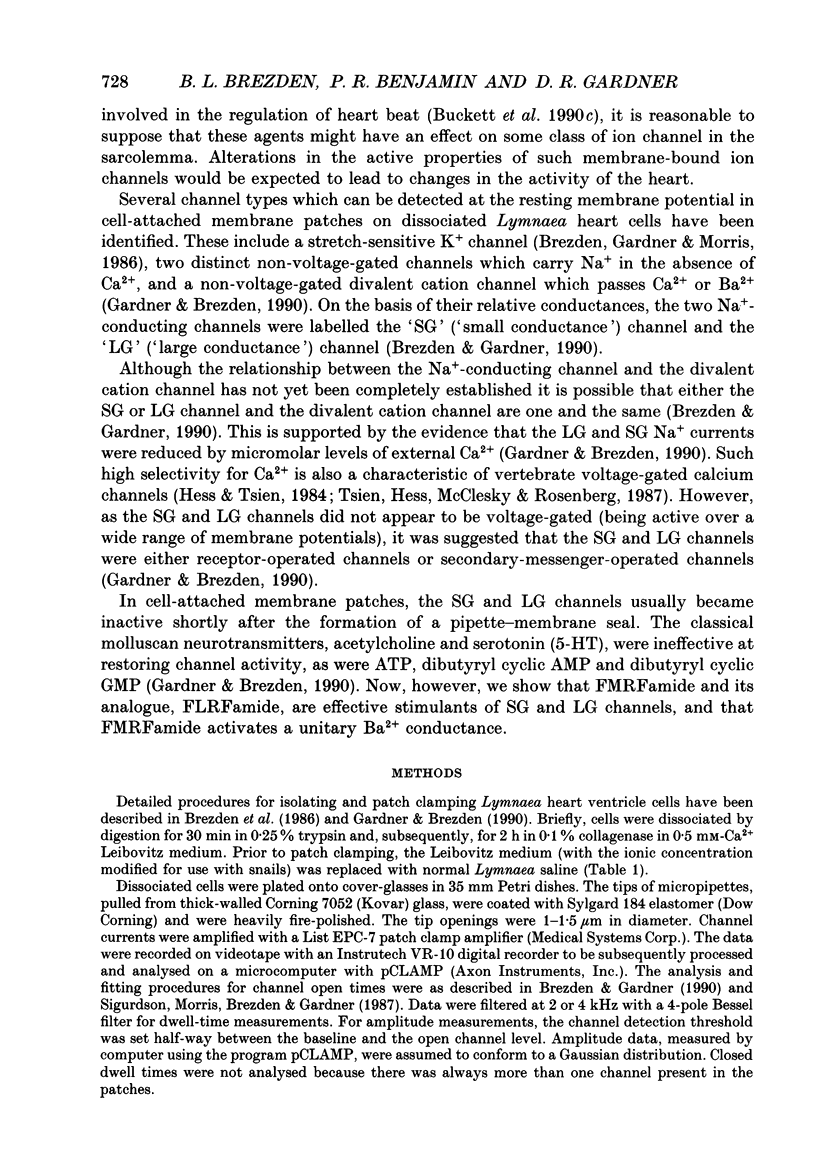
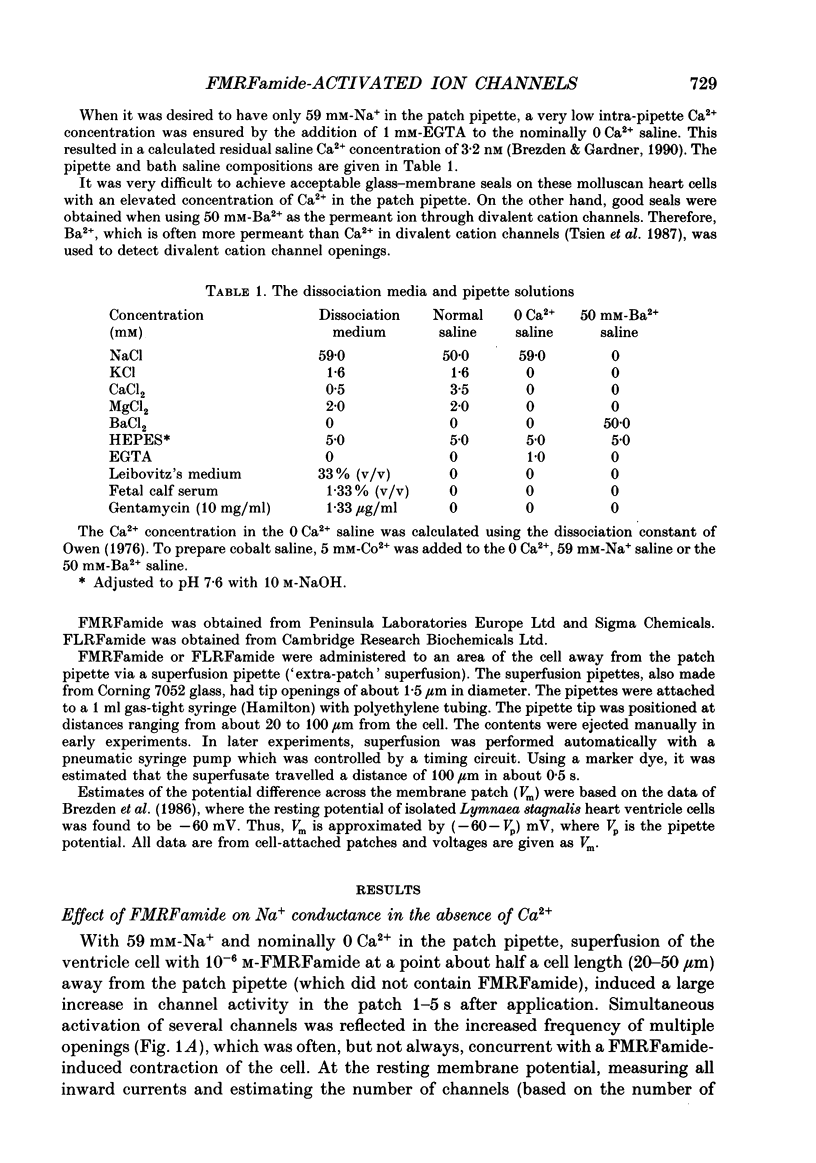
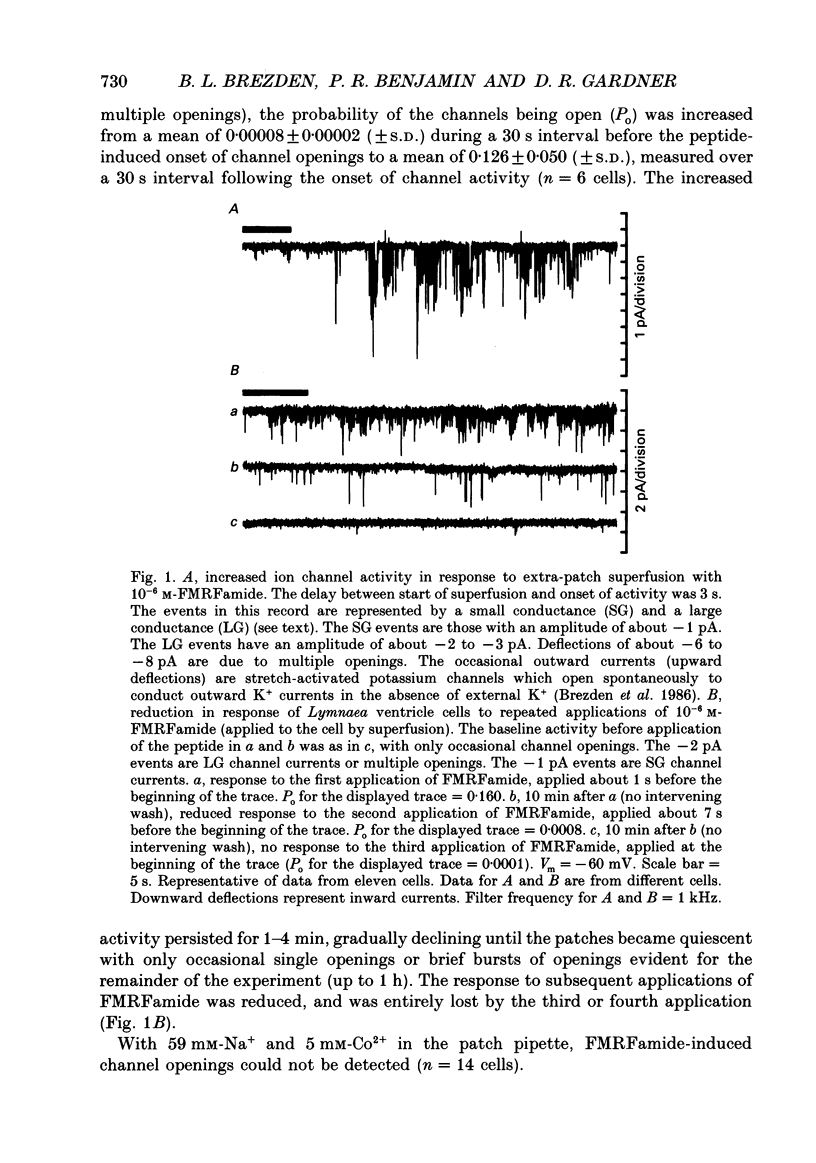
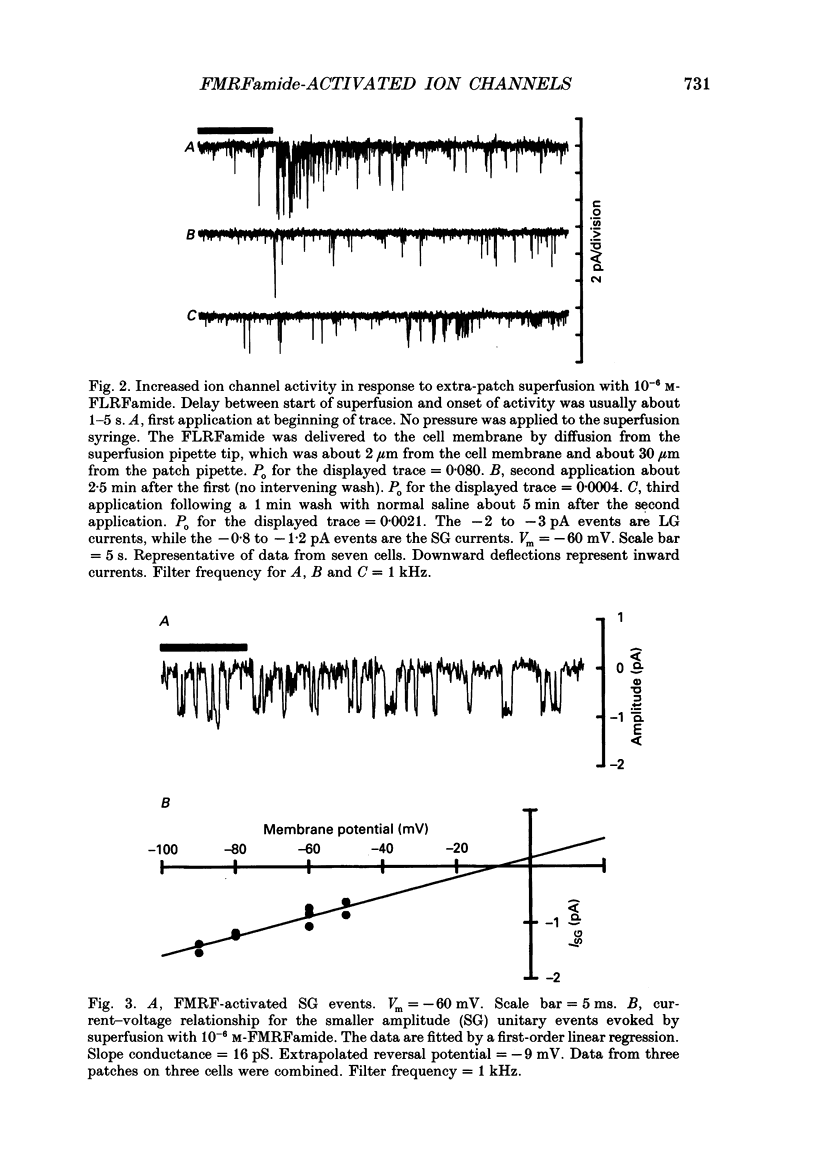
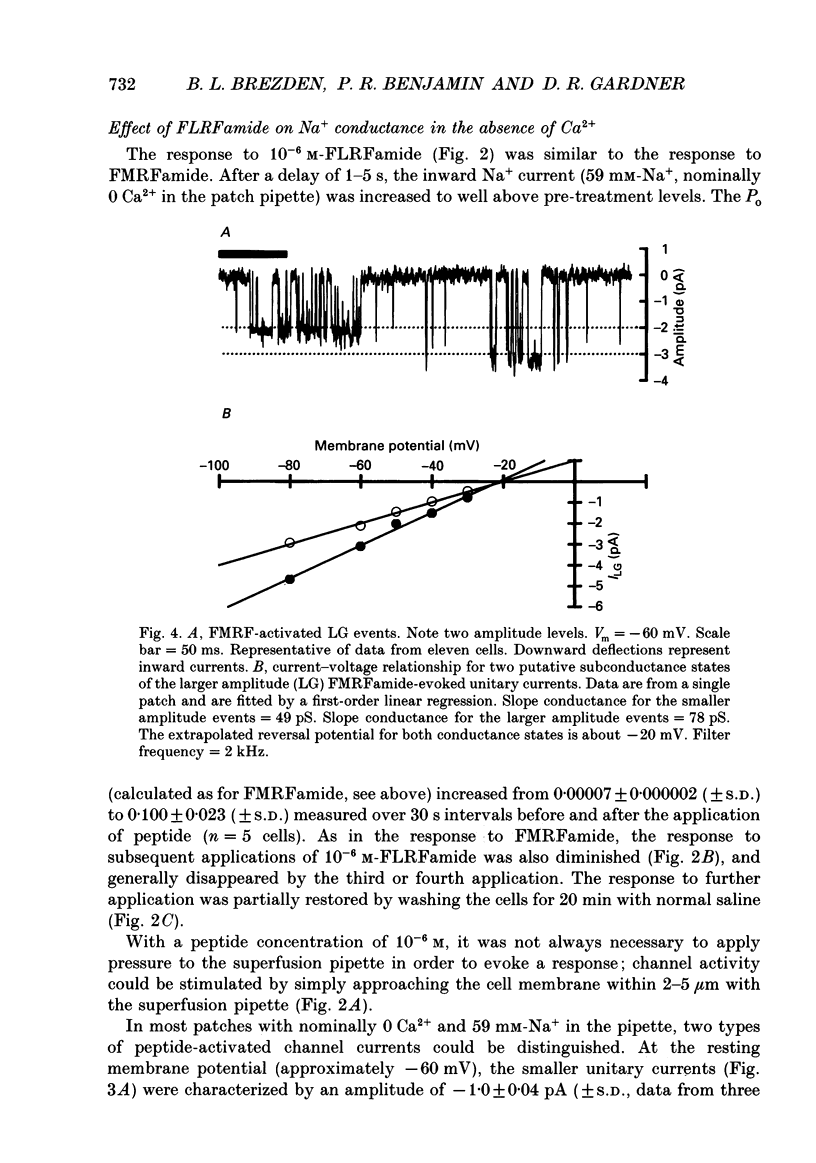
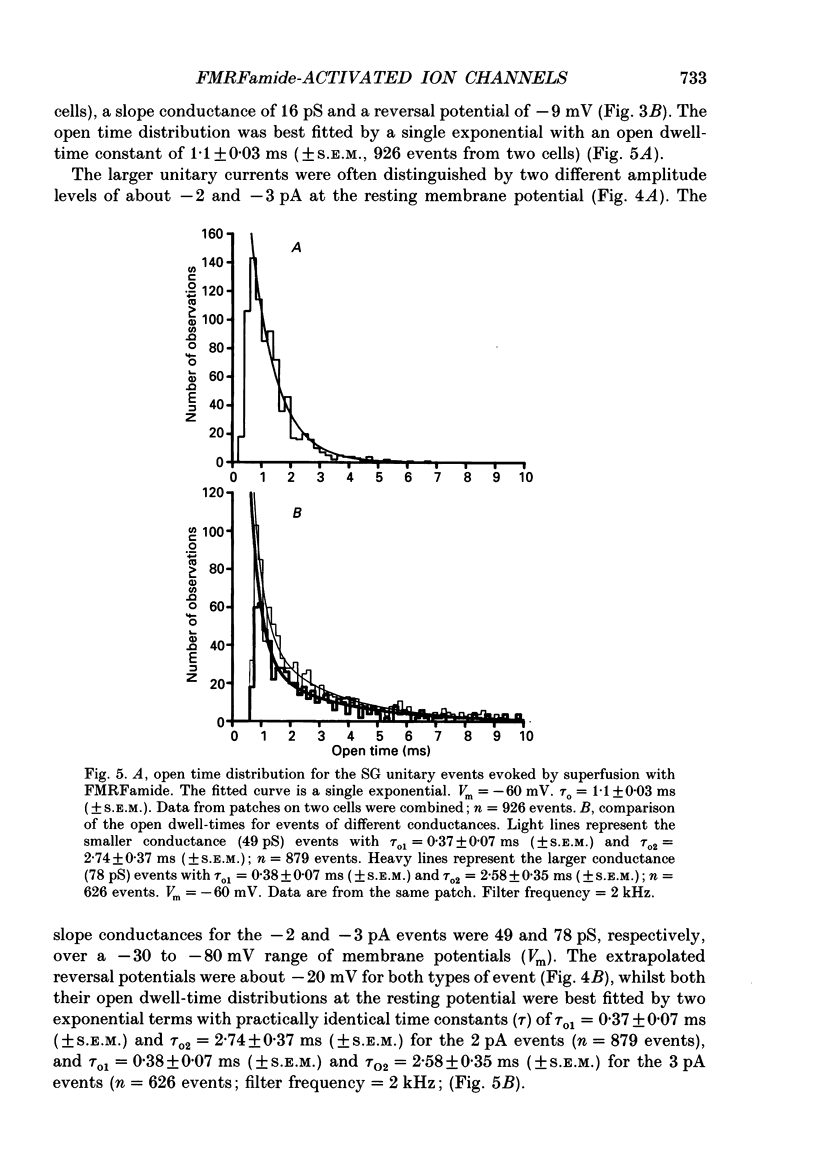
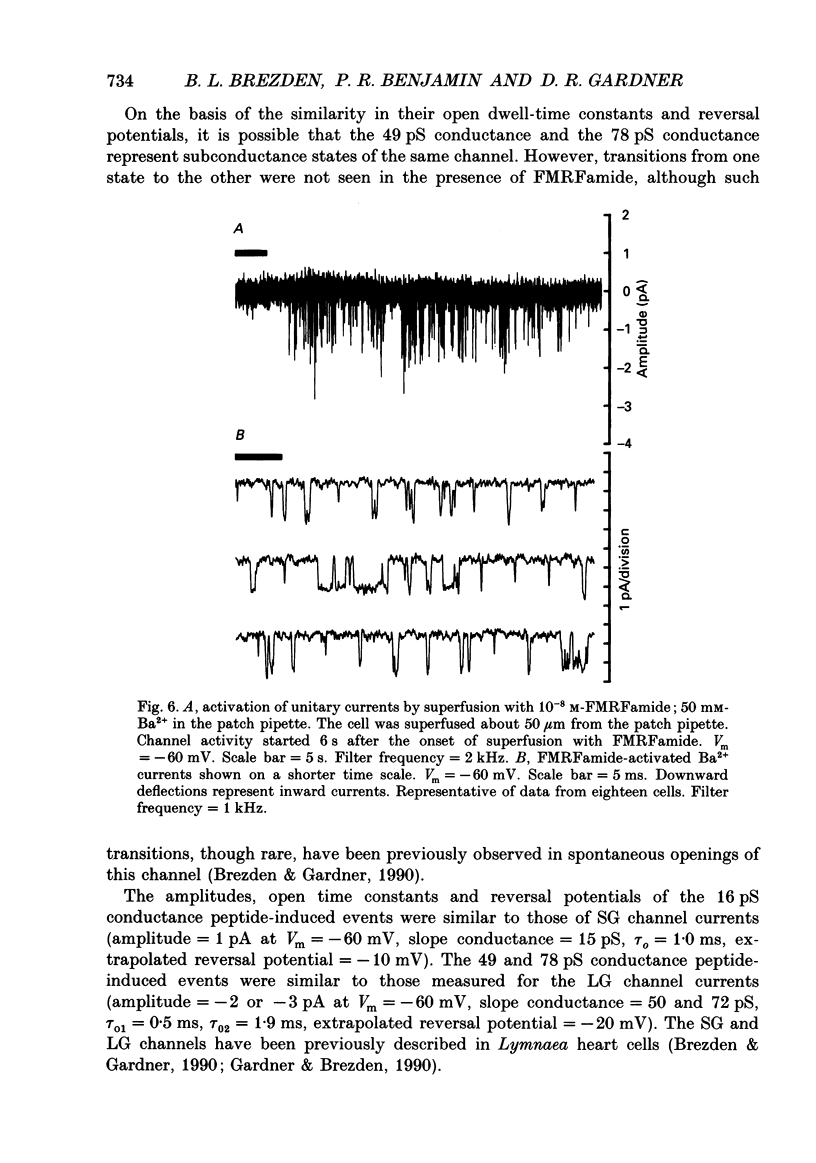
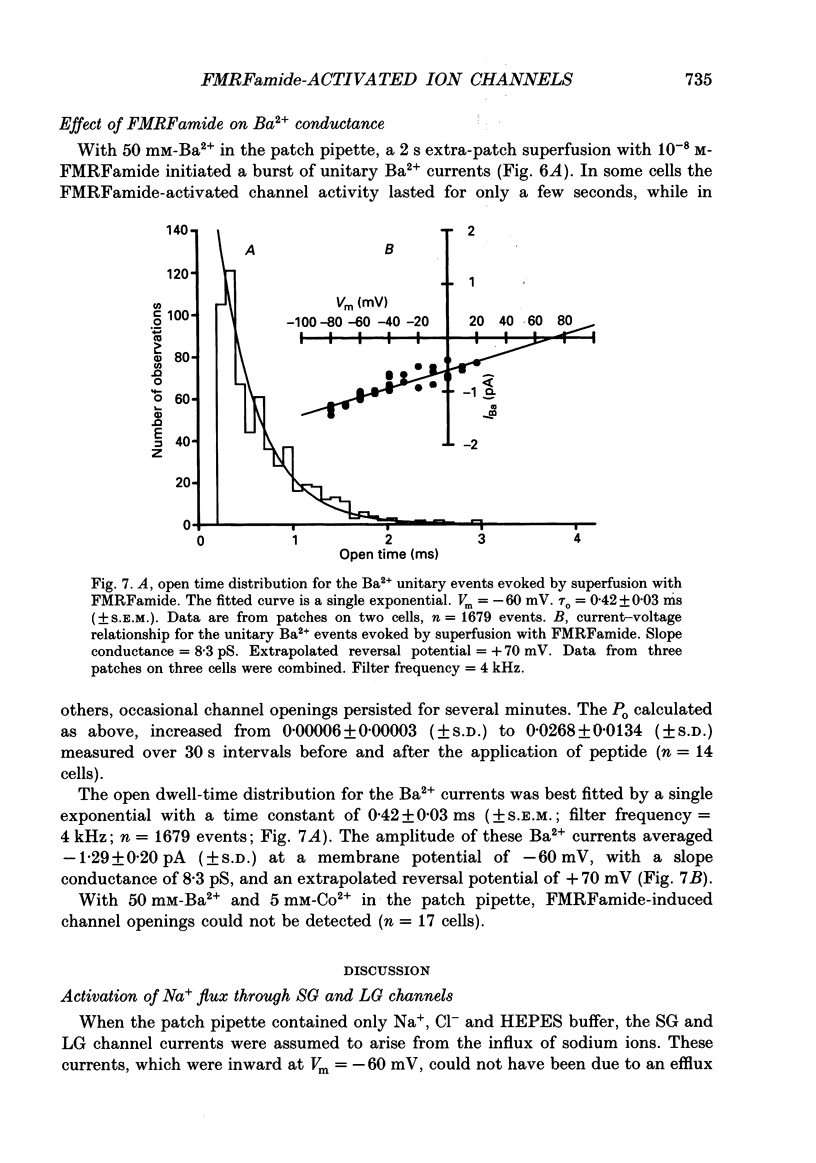
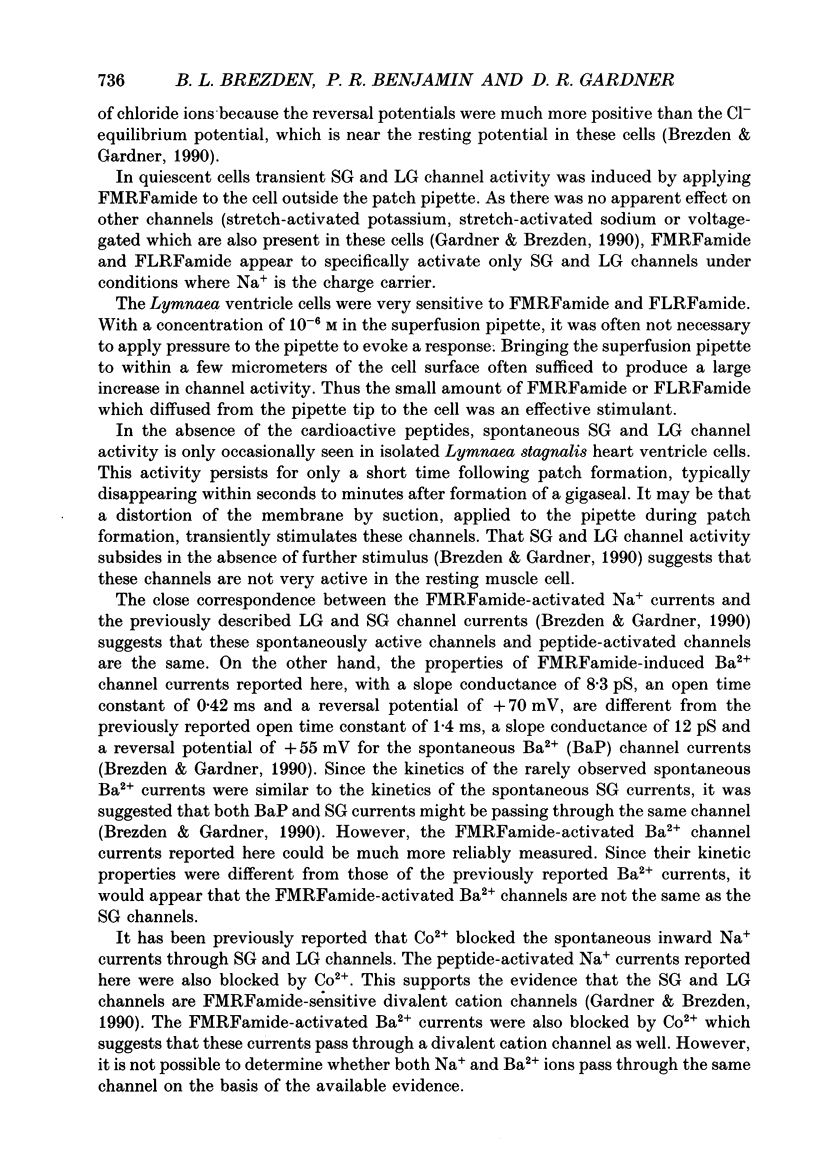
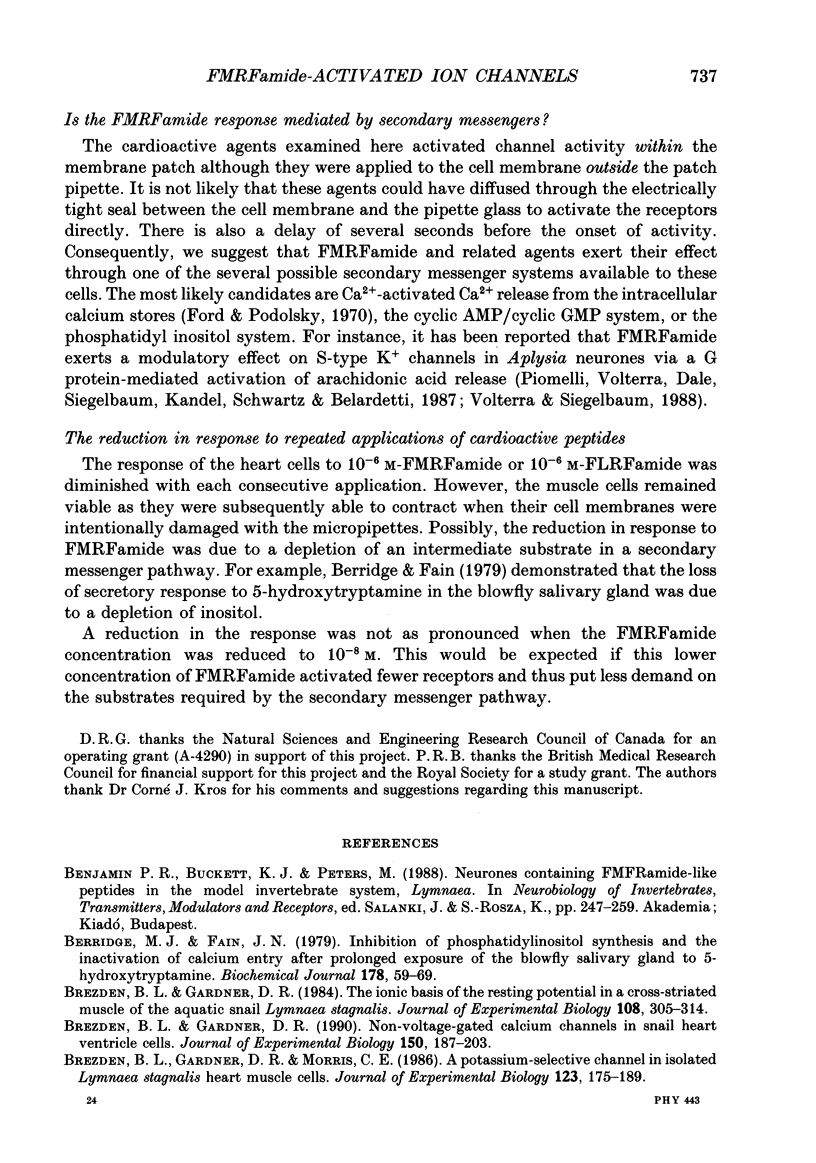
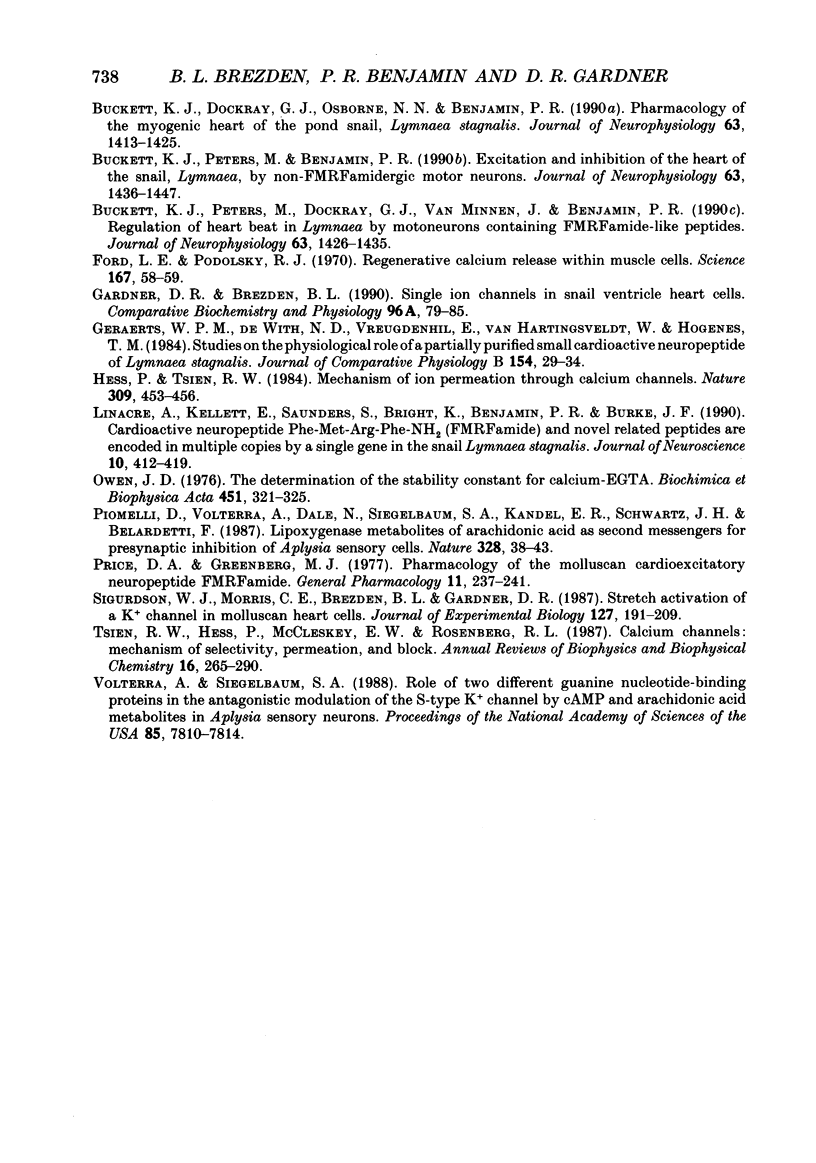
Selected References
These references are in PubMed. This may not be the complete list of references from this article.
- Berridge M. J., Fain J. N. Inhibition of phosphatidylinositol synthesis and the inactivation of calcium entry after prolonged exposure of the blowfly salivary gland to 5-hydroxytryptamine. Biochem J. 1979 Jan 15;178(1):59–69. doi: 10.1042/bj1780059. [DOI] [PMC free article] [PubMed] [Google Scholar]
- Brezden B. L., Gardner D. R. Non-voltage-gated calcium channels in snail heart ventricle cells. J Exp Biol. 1990 May;150:187–203. doi: 10.1242/jeb.150.1.187. [DOI] [PubMed] [Google Scholar]
- Buckett K. J., Dockray G. J., Osborne N. N., Benjamin P. R. Pharmacology of the myogenic heart of the pond snail Lymnaea stagnalis. J Neurophysiol. 1990 Jun;63(6):1413–1425. doi: 10.1152/jn.1990.63.6.1413. [DOI] [PubMed] [Google Scholar]
- Buckett K. J., Peters M., Benjamin P. R. Excitation and inhibition of the heart of the snail, Lymnaea, by non-FMRFamidergic motoneurons. J Neurophysiol. 1990 Jun;63(6):1436–1447. doi: 10.1152/jn.1990.63.6.1436. [DOI] [PubMed] [Google Scholar]
- Buckett K. J., Peters M., Dockray G. J., Van Minnen J., Benjamin P. R. Regulation of heartbeat in Lymnaea by motoneurons containing FMRFamide-like peptides. J Neurophysiol. 1990 Jun;63(6):1426–1435. doi: 10.1152/jn.1990.63.6.1426. [DOI] [PubMed] [Google Scholar]
- Ford L. E., Podolsky R. J. Regenerative calcium release within muscle cells. Science. 1970 Jan 2;167(3914):58–59. doi: 10.1126/science.167.3914.58. [DOI] [PubMed] [Google Scholar]
- Hess P., Tsien R. W. Mechanism of ion permeation through calcium channels. 1984 May 31-Jun 6Nature. 309(5967):453–456. doi: 10.1038/309453a0. [DOI] [PubMed] [Google Scholar]
- Linacre A., Kellett E., Saunders S., Bright K., Benjamin P. R., Burke J. F. Cardioactive neuropeptide Phe-Met-Arg-Phe-NH2 (FMRFamide) and novel related peptides are encoded in multiple copies by a single gene in the snail Lymnaea stagnalis. J Neurosci. 1990 Feb;10(2):412–419. doi: 10.1523/JNEUROSCI.10-02-00412.1990. [DOI] [PMC free article] [PubMed] [Google Scholar]
- Owen J. D. The determination of the stability constant for calcium-EGTA. Biochim Biophys Acta. 1976 Nov 18;451(1):321–325. doi: 10.1016/0304-4165(76)90282-8. [DOI] [PubMed] [Google Scholar]
- Piomelli D., Volterra A., Dale N., Siegelbaum S. A., Kandel E. R., Schwartz J. H., Belardetti F. Lipoxygenase metabolites of arachidonic acid as second messengers for presynaptic inhibition of Aplysia sensory cells. Nature. 1987 Jul 2;328(6125):38–43. doi: 10.1038/328038a0. [DOI] [PubMed] [Google Scholar]
- Tsien R. W., Hess P., McCleskey E. W., Rosenberg R. L. Calcium channels: mechanisms of selectivity, permeation, and block. Annu Rev Biophys Biophys Chem. 1987;16:265–290. doi: 10.1146/annurev.bb.16.060187.001405. [DOI] [PubMed] [Google Scholar]
- Volterra A., Siegelbaum S. A. Role of two different guanine nucleotide-binding proteins in the antagonistic modulation of the S-type K+ channel by cAMP and arachidonic acid metabolites in Aplysia sensory neurons. Proc Natl Acad Sci U S A. 1988 Oct;85(20):7810–7814. doi: 10.1073/pnas.85.20.7810. [DOI] [PMC free article] [PubMed] [Google Scholar]


